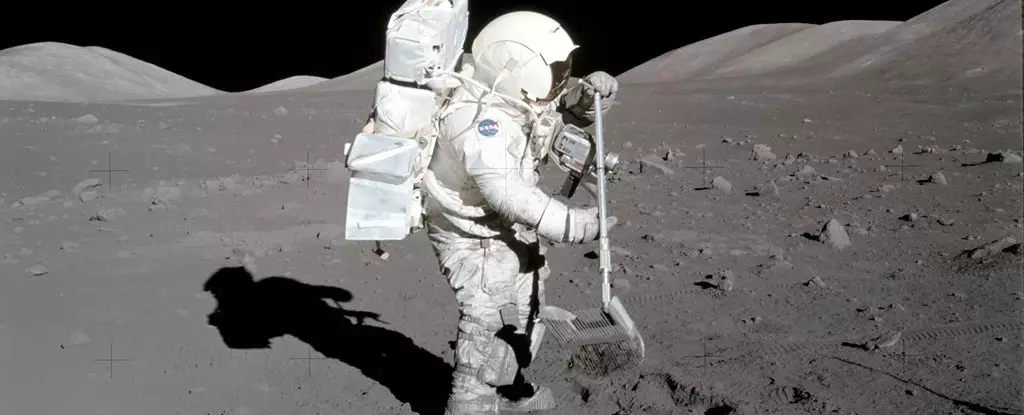Lunar exploration has always been a fascinating subject for scientists and space enthusiasts alike. As humans venture further into space, the need for resources, particularly water, becomes increasingly crucial. The challenge of carrying large amounts of water on extended lunar missions has led researchers to investigate alternative sources. Recent findings from the US Naval Research Laboratory (NRL) shed light on the potential existence of water on the Moon and its origins. This discovery opens up new possibilities for future exploration and could revolutionize our understanding of lunar resources.
The NRL research team, led by Katherine D. Burgess, embarked on a study to comprehend the source and formation of water on the Moon. Their objective was to determine the viability of utilizing lunar resources in upcoming lunar missions and permanent lunar bases. The paper emphasizes the necessity of understanding how and where water is formed and retained within the regolith, the layer of loose rock and dust covering the Moon’s surface.
To unravel the mysteries of lunar water, the researchers turned to transmission electron microscopy. This cutting-edge technique employs a particle beam of electrons to examine specimens and generate highly magnified images. By analyzing lunar sample 79221, the team focused on the grains of minerals apatite and merrillite, discovering traces of “space” weathering caused by the solar wind.
The solar wind, a stream of charged particles emanating from the Sun at remarkable speeds, was found to leave behind hydrogen signatures in small holes, known as vesicles, which form as lava cools. These findings confirm the presence of detectable quantities of solar wind trapped within the lunar rocks, potentially serving as a valuable reservoir for future explorers.
Hydrogen, an elemental component of water, holds tremendous potential as a resource for lunar missions. If mining hydrogen from the lunar surface becomes feasible, it could revolutionize various aspects of space exploration. The recent discovery of hydrogen signatures in lunar samples offers a promising avenue for accessing this valuable resource.
One of the most significant implications of this finding is the possible resolution of the long-standing mystery surrounding the origins of lunar water. The researchers speculate that the interactions between the solar wind and lunar rocks may have played a crucial role in the formation of water on the Moon. As scientists approach a deeper understanding of this phenomenon, they inch closer to unraveling the secrets of lunar water.
The discovery of hydrogen in lunar rocks marks a significant milestone in our quest to explore and utilize the Moon’s resources effectively. As space agencies and private companies prepare for future lunar missions and establish permanent bases, the availability of local resources becomes essential for sustainability and cost-effectiveness.
Access to water on the Moon would revolutionize the logistics of extended lunar missions. Instead of carrying large amounts of water from Earth, astronauts could potentially extract water from the lunar regolith, significantly reducing payload requirements and enabling longer missions.
Furthermore, the ability to mine hydrogen could facilitate the production of rocket propellant on the Moon, making it a launching pad for deeper missions into the Solar System. The potential of lunar water extends far beyond lunar exploration and could revolutionize our understanding of space travel as a whole.
The NRL’s groundbreaking findings provide a new perspective on lunar water and its origins. By uncovering traces of the solar wind within lunar rocks, researchers have presented compelling evidence of a potential water source on the Moon. This discovery has the potential to reshape the future of lunar exploration and revolutionize our understanding of space resources.
As we unlock the mysteries of lunar water, we move towards a more sustainable and ambitious era of space exploration. By utilizing local resources, we can reduce our dependence on Earth’s limited supplies and venture further into the Solar System. The discovery of hydrogen in lunar rocks breathes new life into our dreams of exploring the Moon and beyond.


Leave a Reply